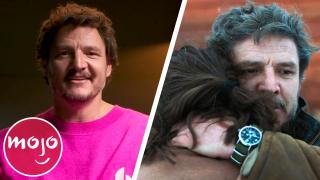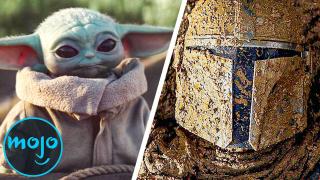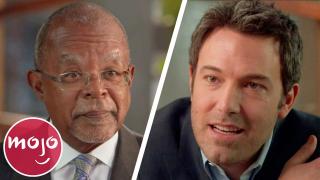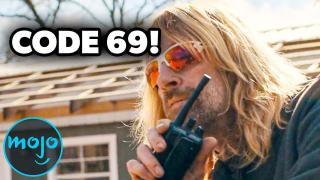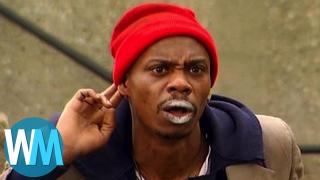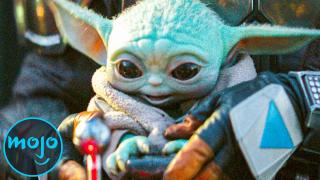Top 10 Craziest Behind The Scenes Moments From The Mandalorian
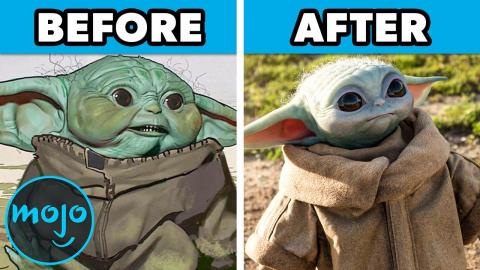
#10: Herzog & the Child
For the very first live action Star Wars TV show, creator Jon Favreau brought together a truly stellar cast. But one of the most surprising additions was eccentric filmmaker and actor Werner Herzog. Known for his challenging and experimental approach to cinema, Herzog, by his own admission, had never seen a Star Wars film. Playing “the Client”, however, he quickly connected with the franchise’s newest icon, the Child. As Chapter 3 director Deborah Chow explained when discussing Baby Yoda, Herzog apparently began directing the puppet as if it was an actual living creature. And he wasn’t the only one. According to Gina Carano, the cast and crew were similarly enamored and many people couldn’t help but talk to the Child onset as if it were real.
#9: Pedro Pascal’s Injury
Top 10 Times Pedro Pascal Hit Peak Dad Energy
“The Mandalorian” boasts some seriously impressive fight scenes, but arguably the production’s biggest injury happened off-set when there weren’t even cameras rolling. Walking out of the makeup trailer, Pedro Pascal hit his face on some plywood and opened a massive cut on his nose that required seven stitches. Here’s the real kicker though: he’d just finished getting covered in bloody makeup for his big unmasking in Chapter 8, and so when he showed up at the hospital, the staff assumed he’d been far more seriously injured. A real trooper, Pascal returned to set that same day, and has a good enough sense of humor to laugh at himself for getting injured in such a silly way.
#8: Send in the 501st
For the last two episodes of “The Mandalorian”, the filmmakers lined up about 30 stormtroopers. Heading into the shoot however, they realized that it simply wasn’t enough to make the impression they wanted, and they were all out of costumes. So they called in the 501st Legion! This organization of stormtrooper cosplayers do events, premieres, hospital visits, conventions, and parades - often at the behest of Lucasfilm. But they never get called in for movies. And so these massive Star Wars fans got to live out the ultimate fantasy of appearing on-camera in an official Star Wars production in their own personal armor. They freaking lost it. And as Favreau says, the 501st really know what they’re doing - they fully inhabit the stormtrooper role.
#7: The Original Greef Karga
Top 10 Best Moments from The Mandalorian
Jon Favreau somehow managed to get the legendary Carl Weathers to join his cast, which is a big deal considering he does so little acting these days. Speaking in the docuseries, Weathers admitted to having some initial reservations, but was convinced when he read the script. It’s a good thing he did, because Gina Carano credits him with having served as an incredible example and teacher on-set. Initially, Greef Karga was set to be an alien character with prosthetics that would’ve essentially rendered Weathers unrecognizable. He was also meant to die in Chapter 3. Realizing how lucky they were to have him onboard, however, they reworked the character to make the most of Weathers’ involvement.
#6: Finding a Musical Identity
Top 10 Shocking Revelations on Finding Your Roots
For “The Mandalorian”, composer Ludwig Göransson and the filmmakers agreed that the music needed to be an intentional departure from the iconic scores of John Williams - whom Göransson holds in the highest regard. Following Favreau’s lead, Göransson looked at the music of spaghetti westerns and samurai cinema. The main theme was, believe it or not, written and performed on a large recorder. Göransson tried to find organic sounds that fit with this very personal journey, developing songs for various characters and planets, all guided by the sound of that core theme. By bringing in an orchestra, he was also to create epic moments that, for all the musical differences, create a bridge to that classic Star Wars sound.
#5: The Helmet
Top 10 Shocking Moments From Tiger King Season 2
By covering Mando’s face, Favreau and company created quite the challenge for themselves. After all, facial expressions are what we, as viewers, spend most of our time looking at, and are what we rely on to relate to a character. To work around this hurtle, the cast and crew had to find alternative ways to make the Mandalorian an expressive and relatable character. Body language replaced the Mandalorian’s face, with every movement (or lack thereof) carrying a meaning. Of course, as Carl Weathers explains, the helmet posed a major challenge for the other actors as well, who had to adjust their acting style and instead learn to focus more on vocal cues instead of facial expressions.
#4: Revolutionary Technology
“The Mandalorian” is an unprecedented feat of technical filmmaking. The world of the series was brought to life using “the Volume”, a 75 foot wide cylindrical room of LED screens, whose walls and ceilings display a photo-realistic environment. Through the use of video game engines, the filmmakers were able to create new environments and have the backgrounds adjust in real-time while shooting, moving in parralax with the camera. The level of immersion is so high that Disney execs - and even some people on-set - struggled to distinguish between the screens and reality. And wouldn’t you know it, this is technology that George Lucas predicted!
#3: Dave Filoni Understands Star Wars Like Few Others
Top 10 Dave Chappelle Moments
If you’ve never gotten into the animated side of Star Wars, you might not know Dave Filoni. But as the docuseries shows, he loves this franchise. Hilariously, this walking encyclopedia of Star Wars apparently almost blew his interview with Lucasfilm because he thought he was being pranked. He now oversees all of Lucasfilm Animation, but “The Mandalorian” was actually his first time working in the live action medium. Everyone involved in this project clearly has a passion for Star Wars, but Filoni is an expert in a league of his own. His analysis of the Duel of the Fates, and how it ties into the original trilogy, leaves everyone in the room speechless - and may just give you a new appreciation for the prequels.
#2: Baby Yoda: Designing an Icon
Top 10 Baby Yoda Moments
There are a lot of things about the Child that feel remarkable - including the fact that they somehow managed to keep the character underwraps! But while it's safe to say that the filmmakers knew they’d created something special, we doubt even they knew just what an instant icon this character would become. Baby Yoda didn’t just fall into their laps though! Favreau and co. went through countless drawings before settling on a design for the character that felt right. It then took a full three months to build the puppet, which requires an entire team to control. Thankfully, it was worth all the effort; the end result is a collaborative puppet performance so expressive that the actors actually play off of its cues as they would another actor. Before we unveil our top pick, here are a few honorable mentions. Hal Hickel of Industrial Light & Magic Reviewed & Analysed the Original Trilogy to Create a Cohesive Style Guide Reel for Star Wars. Though Voiced by Nick Nolte, Kuiil the Ugnaught Was Performed by Misty Rosas in an Animatronic Mask Taika Waititi Salvaged Old Lord of Rings Props to Make his Vampire Mockumentary “What We Do in the Shadows” “Star Wars: Episode I – The Phantom Menace” Used More Miniatures Than Any Other Star Wars Film Kathleen Kennedy Pointed Out for the Show’s Costume Design that Star Wars Characters Have Iconic, Recognizable Silhouettes
#1: The Men Behind the Mask
Top 10 Craziest Moments from 90 Day Fiancé Happily Ever After Season 4
Pedro Pascal is the big name actor who Favreau chose to cast as the titular Mandalorian. But while he always voices the character, he calls himself “third fiddle” to the two other men with whom he shares the armor. Actors often have a stunt double, but for the Mandalorian, they brought in experts who could sell the character as a master of his trade. When the guns come out, it’s actually firearms expert Brendan Wayne - grandson of the legendary John Wayne. Lateef Crowder, for his part, being a master of martial arts and a practiced stuntman, steps in for the hand-to-hand combat and more physically demanding scenes. Only by working together can these three men collaboratively bring the bounty hunter to life so convincingly.


